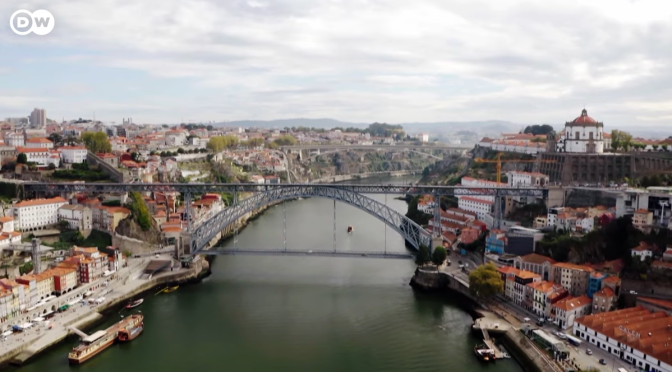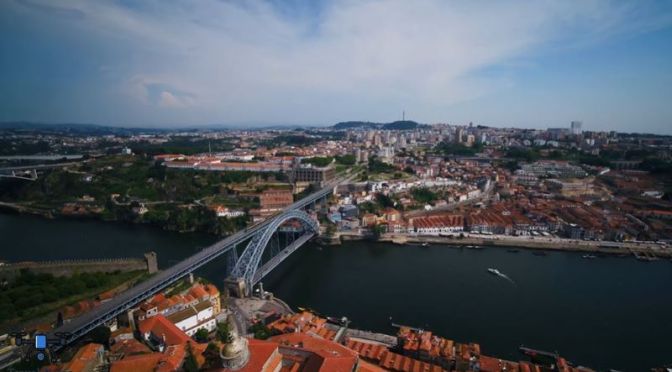Porto is a coastal city in northwest Portugal known for its stately bridges and port wine production. In the medieval Ribeira (riverside) district, narrow cobbled streets wind past merchants’ houses and cafes. São Francisco Church is known for its lavish baroque interior with ornate gilded carvings. The palatial 19th-century Palácio de Bolsa, formerly a stock market, was built to impress potential European investors.
Tag Archives: Northern Portugal
Views: World’s Longest Pedestrian Suspension Bridge In Portugal (Video)
The world’s longest pedestrian suspension bridge it opened near Arouca in northern Portugal. The see-through metal wire bridge is 516-metre-long (1,693-ft) and hangs 175 meters above the fast-flowing River Paiva. Locals hope the attraction, which cost about 2.3 million euros ($2.8 million) and took around two years to build, will help revive the region, especially after the devastating Covid-19 pandemic.
Aerial Views: ‘Northern Portugal’ (2K Video)
“Up North” is my first “aerial film”, using only images collected from drone. A look at the lands of the North, from its terraces to the typical morning fog that forms along the slopes that connect the Douro to Tâmega. A trip through the clouds to enjoy and “fly” a little.
Portugal is a southern European country on the Iberian Peninsula, bordering Spain. Its location on the Atlantic Ocean has influenced many aspects of its culture: salt cod and grilled sardines are national dishes, the Algarve’s beaches are a major destination and much of the nation’s architecture dates to the 1500s–1800s, when Portugal had a powerful maritime empire.
New Aerial Travel Video: ‘Porto, Portugal’ (2020)
Porto is a coastal city in northwest Portugal known for its stately bridges and port wine production. In the medieval Ribeira (riverside) district, narrow cobbled streets wind past merchants’ houses and cafes. São Francisco Church is known for its lavish baroque interior with ornate gilded carvings. The palatial 19th-century Palácio de Bolsa, formerly a stock market, was built to impress potential European investors.




